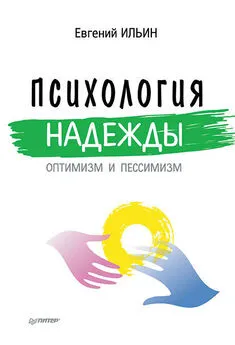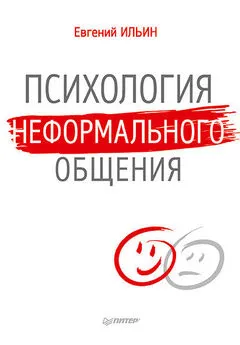Евгений Ильин - Психология совести. Вина, стыд, раскаяние
- Название:Психология совести. Вина, стыд, раскаяние
- Автор:
- Жанр:
- Издательство:ООО Издательство «Питер»
- Год:2016
- Город:Санкт-Петербург
- ISBN:978-5-496-01970-5
- Рейтинг:
- Избранное:Добавить в избранное
-
Отзывы:
-
Ваша оценка:
Евгений Ильин - Психология совести. Вина, стыд, раскаяние краткое содержание
Последняя книга профессора Ильина посвящена важнейшему аспекту нравственности личности – психологии совести и ее составляющих – вине и стыду. До сих пор эта проблема недостаточно изучена в отечественной психологии. В книге описаны имплицитные и научные представления о совести, ее природе, роли и функциях. Рассмотрены вопросы о чувстве долга, эмоции вины и угрызениях совести, различные аспекты переживания стыда. Помимо анализа литературы по данной проблеме в книге приведен обширный библиографический список, а также методики изучения совести, вины и стыда.
Издание предназначено для психологов, педагогов, социологов, специалистов по межличностным отношениям, а также для студентов вузовских факультетов соответствующих профилей.
Психология совести. Вина, стыд, раскаяние - читать онлайн бесплатно ознакомительный отрывок
Интервал:
Закладка:
Belsky J., Domitrovich C. Temperament and parenting antecedents of individual difference in three-year-old boys pride and shame reactions. Child Development. 1997. Vol. 68. P. 456–466.
Benedict R. Patterns of culture. Boston. Houghton Mifflin. 1934.
Berg B. The crisis of the working mother. Summit US. 1986.
Bergin A. E. Three contribution of a spiritual perspective to counseling, psychotherapy and behavioral change. Counseling and Values. 1988. № 33. P. 21–31.
Berrios G., Bulbera A., Bakshi N., Dening Т., Jenaway H., Markar H., Martin-Santos R., Mitchell S . Felling of guilt in major depression. British Journal of Psychiatry. 1992 (160). P. 781–787.
Borman K., Quarm D., Gildeonse S. (eds.). Women in the workplace: Effects on families. New Jersey. 1984.
Bortnik K., Henderson L., Zimbardo P. The Shy Q., a measure of chronic shyness: Associations with interpersonal motives, interpersonal values and self-conceptualizations. 2002. November 14 thto 17 th. Reno. Nevada.
Branscombe N. R., Doosje B., McGarty C. Antecedents and consequences of collective guilt. D. M. Mackie, E. R. Smith (eds.). From prejudice to intergroup emotions: Differentiated reactions to social groups. New York. Psychology Press. 2003. P. 49–66.
Branscombe N. R., Slugoski B., Kappen D. M. The measurement of collective guilt: What it is and what it is not. N. R. Branscombe, D. Doosje (eds.), Collective guilt: International perspectives. NY. Cambridge University Press. 2004. P. 16–34
Brockner J., Davy J., Carter C. Layoffs, self-esteem, and survivor guilt: Motivational, affective and attitudinal consequences. Organizational Behavior and Human Decision Processes. 1985. Vol. 36 (2). P. 229–244.
Brown R., Gonzalez R., Zagefka H., Manzi J., Cehajic S. Nuestra culpa: Collective guilt and shame as predictors of reparation for historical wrongdoing. Journal of Personality and Social Psychology. 2008. Vol. 94. P. 75–90.
Buchner A., Bell R., Mehl B., Musch J. No enhanced recognition memory, but better source memory for faces of cheaters. Evolution and Human Behavior. 2009. Vol. 30. P. 212–224.
Bugental J. F. The search for authenticity. NY. Holt, Rinehart and Winston. 1965.
Bush M. The role of unconscious guilt in psychopathology and psychotherapy. Bulletin of the Menninger Clinic. 1989. Vol. 53 (2). P. 97–107.
Bybee J. The Emergence of Gender Differences in Guilt during Adolescence. J. Bybee (ed.). Guilt and Children. Academic Press. 1998. P. 114–122.
Cambaro S. Blood pressure relations to expressed and unexpressed anger in low guilt and high guilt subjects. Dissertation Abstracts. 1967. Vol. 27 (9-B). P. 3284–3285.
Campbell J. S., Elison J. Shame coping styles and psychopathic personality traits. Journal of Personality Assessment. 2005. Vol. 84. P. 96–104.
Caprara G. V., Manzi J., Perugini M. Investigating guilt in relation to emotionality and aggression. Personality and Individual Differences. 1992. Vol. 13. P. 519–532.
Caprara G. V., Perugini M., Pastorelli C., Barbaranelli C. Esplorazione delle dimensioni comuni della colpa e dell’aggressivita: contributo empirico. Exploration of the common dimensions of guilt and aggression: Empirical contribution. Giornale Italiano di Psicologia. 1990. Vol. 17. P. 665–681.
Carlsmith J. M., Gross A. E. Some effects of guilt on compliance. Journal of Personality and Social Psychology. 1969. Vol. 4. P. 321–322.
Cheek J. M., Hogan R. Self-concepts, self-presentations, and moral judgments. J. Suls, A. G. Greenwald (eds.). Psychological perspectives on the self. Hillsdale. NJ. Erlbaum. 1983. Vol. 2. P. 249–273.
Claesson K., Sohlberg S. Shame and interpersonal scripts: Internalized and other scripts characterized by indifference, abandonment, and rejection: Replicated findings. Clinical Psychology and Psychotherapy. 2002. Vol. 9. P. 277–284.
Close H. T. Forgiveness and responsibility: A case study. Pastoral Psychology. 1970. № 21. P. 19–25.
Cook D. R. Empirical studies of shame and guilt: The Internalized Shame Scale. D. L. Nathanson (ed.). Knowing feeling: Affect, script, and psychotherapy. NY. Norton. 1996. P. 132–165.
Cook D. R. Internalized shame scale: Professional manual. Menomonie, WI. Channel Press, 1994.
Cook D. R. Internalized shame scale: Technical manual. North Towanda. NY. Multi-Health Systems, Inc. 2001.
Cook D. R. Measuring shame: The internalized shame scale. Alcoholism Treatment Quarterly. 1987. Vol. 4. P. 197–215.
Cook D. R. Shame, attachment, and addictions: Implications for marriage and family therapists. Contemporary Family Therapy. 1991. Vol. 13. P. 405–419.
Creighton M. R. Revisiting shame and guilt cultures: A forty-year pilgrimage. Ethnos. 1990. Vol. 18. P. 279–307.
Cua A. S. The Ethical Significance of Shame: Insights of Aristotle and Xunzi. Philosophy East and West. 2003. Vol. 53. P. 147–202.
Darby B. W., Schlenker B. R. Children’s reaction to apologies. Journal of Personality and Social Psychology. 1982. Vol. 43. P. 742–753.
Darlington R. B., Macker C. E. Displacement of guilt-produced altruistic behavior. Journal of Personality and Social Psychology. 1966. Vol. 4 (4). P. 442–443.
De Hooge I. E., Breugelmans S. M., Zeelenberg M. Not so ugly after all: When shame acts as a commitment device. Journal of Personality and Social Psychology. 2008. Vol. 95. P. 933–943.
De Hooge I. E., Nelissen R. M. A., Breugelmans S. M., Zeelenberg M. What is moral about guilt? Acting “prosocially” at the disadvantage of others. Journal of Personality and Social Psychology. 2011. Vol. 100. P. 462–473.
De Hooge I. E., Zeelenberg M., Breugelmans S. M. Moral sentiments and cooperation: Differential influences of shame and guilt. Cognition and Emotion. 2007. Vol. 21. P. 1025–1042.
De Hooge I. E., Zeelenberg M., Breugelmans S. M. Restore and protect motivations following shame. Cognition and Emotion. 2010. Vol. 24. P. 111–127.
Dearing R. L., Stuewig J., Tangney J. P. On the importance of distinguishing shame from guilt: Relations to problematic alcohol and drug use. Addictive Behaviors. 2005. Vol. 30. P. 1392–1404.
Dickerson S. S., Kemeny M. E., Aziz N., Kim K. H., Fahey J. L. Immunological effects of induced shame and guilt. Psychosomatic Medicine. 2004. Vol. 66. P. 124–131.
Donenberg G. R., Weiaz J. R. Guilt and Abnormal Aspects of Parent-Child Interactions. J. Bybee (ed.). Guilt and Children. Academic Press. 1998. P. 245–267.
Doosje B., Branscombe N. R., Spears R., Manstead A. S. R. Antecedents and consequences of group-based guilt: The effects of in group identification. Group Processes and Intergroup Relations. 2006. Vol. 9. P. 325–338.
Doosje B., Branscombe N. R., Spears R., Manstead A. S. R. Guilty by association: When one’s group has a negative history. Journal of Personality and Social Psychology. 1998. Vol. 75. P. 872–886.
Droll D. M. Forgiveness: Theory and research. Doctor dissertation. Nevada Reno Univ. 1984.
Duval S., Wicklund R. A. A theory of objective self-awaraness. NY. Academic Press. 1972.
Eales М. Shame among unemployed men. Social Science and Medicine. 1989. Vol. 28. P. 783–789.
Eibl-Eibesfeld I. Love and hate: The natural history of behavior patterns. NY. Holt, Rinehart and Winston. 1971.
Einstein D., Banning K. Shame, Guilt, Ego Development and Five-Factor Model of Personality. Journal of Personality. 1998. Vol. 66 (4). P. 555–582.
Elison J., Jeff A., Pulos S. et al . Shame-focused coping: an empirical study of the compass of shame. Social Behavior and Personality. 2006. Vol. 34 (2). P. 161–168.
Elison J., Lennon R., Pulos S. Investigating the compass of shame: the development of the compass of shame scale. Social Behavior and Personality. 2006. Vol. 34. P. 221–238.
Elison J., Pulos S., Lennon R. Shame-focused coping: An empirical study of the Compass of Shame. Social Behavior and Personality. 2006. Vol. 34. P. 161–168.
Elsenhans T. Wesen und Entstehung des Gewissens. 1894.
Elvin-Nowak Y. The meaning of guilt: A phenomenological description of+ employed mothers’ experiences of guilt. Scandinavian Journal of Psychology. 1998. Vol. 40 (l). P.73–83.
Enright R. D. The Human Development Study Group. Counseling within the forgiveness triad: On forgiving, receiving forgiveness and self-forgiveness. Counseling and Values. 1996. Vol. 40. P. 107–126.
Enright R. D. The Human Development Study Group. The moral development of forgiveness. W. M. Kurtines, J. L. Gewirtz (eds.). Handbook of moral behavior and development. Vol. 1. Theory. Hillsdale. NY. LEA. 1991. P. 123–152.
Enright R. D., Santos M. J. D., Al-Mabuk R. The adolescent as forgiver. Journal of Adolescence. 1989. Vol. 12. P. 95–110.
Enright R. D., Zell R. L. Problems encountered when we forgive one other. Journal of Psychology and Christianity. 1989. № 8. P. 52–60.
Erickson E. H. Childhood and society. NY. Norton. 1950.
Evans R. G. Hostility and sex guilt: Perceptions of self and others as a function of gender and sex-role orientation. Sex Role: A Journal of Research. 1984. Vol. 10. P. 207–215.
Fee R. L., Tangney J. P. Procrastination: A means of avoiding shame or guilt? Journal of Social Behavior and Personality. 2000. Vol. 15. P. 167–184.
Fenyes G. Moral judgment and situation: Appropriateness for self-blame and resistance to temptation. Dissertation Abstracts. 1967. Vol. 78 (13). P. 1687–1683.
Ferguson T. J. Mapping shame and its functions in relationships. Child Maltreatment. 2005. Vol. 10. P. 377–386.
Ferguson T. J., Brugman D., White J., Eyre H. L. Shame and guilt as morally warranted experiences. J. L. Tracy, R. W. Robins, J. P. Tangney (eds.). The self-conscious emotions: Theory and research. NY. Guilford Press. 2007. P. 330–348.
Ferguson T. J., Crowley S. L. Measure for measure: a multitrait-multimethod analysis of guilt and shame. Journal of Personality Assessment. 1997. Vol. 69 (2). P. 425–444.
Ferguson T. J., Susan L. C. Gender Differences in the Organization of Guilt and Shame. Sex Role: A Journal of Research. 1997. Vol. 37 (1–2). P. 19–44.
Fessler D. M. T. Shame in two cultures: Implications for evolutionary approaches. Journal of Cognition and Culture. 2004. Vol. 4. P. 207–262.
Fienauer L. F., Hilton H. G., Callahan E. H. Hardiness as a moderator of shame associated with childhood sexual abuse. American Journal of Family Therapy. 2003. Vol. 31. P. 65–78.
Fischer B. The process of healing shame. Alcohol Treatment Quarterly. 1987. Vol. 4. P. 25–38.
Flanigan B. Forviging. Workshop presented at the Mendota Metnal Health Institute. Medison. Wiscontin. USA. 1987. September.
Frankl V. The will to meaning: Foundation and applications of logotherapy. NY. World Publ. Hous. 1959.
Freedman J. L., Wallington S. A., Bless E. Compliance without pressure: The effect of guilt. Journal of Personality and Social Psychology. 1967. Vol. 7 (2). P. 117–124.
Freedman S. R., Enright R. D. Forgiveness as an intervention goal with incest survivors. Consulting and Clinical Psychology. 1996. Vol. 64. P. 983–992.
Читать дальшеИнтервал:
Закладка:










